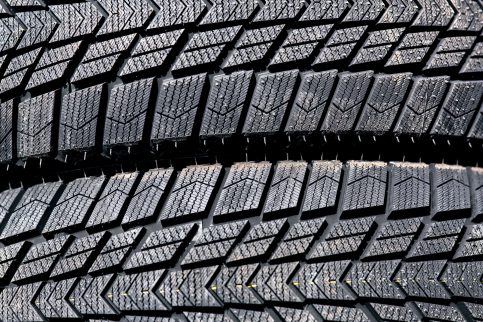
Reprint from Ontario Cars. www.ontariocars.ca
That’s always the big question every fall isn’t it? Do you change to winter tires early on to avoid “tire jams” at the garage? Or do you hold off as long as you can to keep your fuel efficiency high? Maybe you just like to procrastinate, so you only take your vehicle to the garage at the absolute last minute.
Official Recommendation
Transport Canada and the Tire and Rubber Association of Canada (TRA) recommend changing to winter tires when the temperature drops below 7˚C. This is when summer and all-season tires begin to harden, giving you less traction.
“The latest generations of winter tires maintain their elasticity even at extremely low temperatures approaching -30˚C and below,” the TRA’s website says. In addition, it says, “Modern winter tires offer up to 50% or more traction than all-seasons.”
However, if watching the temperature like you watch your odometer will drive you nuts, think more practically. Consider booking your appointment with your garage already in October to avoid start-of-season line-ups. If you prefer to procrastinate, use your breath to tell when it’s the absolute latest time to switch your tires. According to the TRA, if you can see your breath outdoors, it’s high time to get your car to the garage.
What’s the Difference Between Summer and Winter Tires?
Besides the composition of the rubber, winter tires have other features that help them operate in snow and cold temperatures. For example, their treads are deeper to allow room for snow to pack in. The tread patterns on the tires also help move snow and slush and get rid of water. Lastly, winter tires have thousands of tiny grooves that improve the tires’ traction on ice.
Have You Chosen Approved Tires for Winter Driving?
While all-seasons might sound like a cheaper alternative to the semi-annual tire change, they lose traction in colder weather just like summer tires do. If you live in an area with regular snowfall, change to winter tires.

The TRA recommends installing winter tires with the 3-peak mountain snowflake symbol, which you may know as the “alpine symbol.” This symbol means that Transport Canada acknowledges that the tires displaying it meet specific snow traction performance requirements and “have been designed specifically for use in severe snow conditions.”
3 Tips for Maintaining Your Tires and Improving Safety
The TRA recommends these three tips to help you extend the life of your tires and improve overall safety.
- Do not mix tires with different tread patterns or internal construction, or of different sizes: you’ll decrease the stability of your vehicle.
- Monitor tire wear: as your tires wear down, your traction in snow decreases. If the wear is close to the tread-wear indicators, don’t use your tires on snow-covered roads or severe snow conditions. Buy new ones.
- As always, maintain proper air pressure to help extend the life of your tires, improve overall safety, and reduce fuel consumption.
Do You REALLY Need Winter Tires?
If you live in an area with regular snowfalls and icy conditions, then yes. One Ontario law firm goes so far as to state that “it is clearly negligent to operate a vehicle in the winter months without first equipping it with winter tires.”
I’m not a lawyer, so I can’t offer you any legal advice on the matter. However, the same law firm reports that the reason Quebec has made it illegal to drive during specific months without winter tires is precisely because vehicles without winter tires caused a large portion of accidents during that time.
Stay safe and change your tires in the winter before snow hits. It may not be the law in Ontario, but it is common sense.
peter@ubicinc.com
